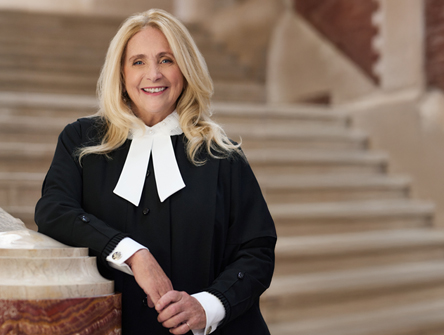A fix to NAFTA’s roster problem?
On the face of it, it looks like USMCA will have a state-to-state dispute settlement mechanism that the parties will be able to use. But politics will be unavoidable.

Maybe you have to be a trade treaty negotiator to appreciate the irony: some dispute settlement clauses are better at starting arguments than ending them.
NAFTA has three dispute settlement mechanisms, all of them contentious for one reason or another. Chapter 11, the investor-state dispute settlement mechanism, has been pilloried as an offence against state sovereignty. The Chapter 19 anti-dumping and countervailing mechanism has tended to render decisions that go against the United States (which might explain in part why the Americans pushed hard to eliminate it in last year’s negotiations to revamp NAFTA, and why Canada insisted on keeping it).
Chapter 20, the state-to-state dispute settlement mechanism, hasn’t come in for the same volume of criticism — maybe because it’s used so seldom. By the time the NAFTA renegotiation talks were drawing to a close a year ago, just 21 disputes had been initiated under it, only three of which actually went to panels that rendered decisions.
Why? Chapter 20 has a glitch that can effectively block the process indefinitely. The panels that decide disputes are supposed to be named jointly by the parties to the dispute. To do that, they’re supposed to draw on a roster of up to 30 individuals selected by the NAFTA partners through consensus and appointed to three-year terms. If one party fails to choose panelists within a set time period, the other party can select two from the roster. If one party picks a panelist who is not on the roster, the other party can block the panel process.
But because that NAFTA roster was never assembled in the first place — the parties to the agreement couldn’t agree on names — the Chapter 20 process never really got any traction.
“If one party refuses to appoint, the default is the roster. No roster means no default mechanism,” says Valerie Hughes, former director of the World Trade Organization’s Legal Affairs Division (2010-16), now senior counsel with Bennett Jones in Ottawa.
That’s what happened in 2000 in a dispute between the U.S. and Mexico over sugar exports: Mexico brought the Chapter 20 challenge, the U.S. blocked the establishment of a panel, and the process jumped the rails. Not a single panel has been struck since 2000. It’s not hard to see why.
So did NAFTA’s replacement, USMCA (or CUSMA, or NAFTA 2.0 — pick your acronym) fix the problem?
Opinions differ. Article 31.8 of USMCA, which replaces NAFTA’s Chapter 20, did import a good idea from the Trans-Pacific Partnership. It states that the parties “shall establish” a 30-person roster by the time the deal enters into force, and the roster shall “remain in effect for a minimum of three years or until the Parties constitute a new roster.”
On the face of it, it looks like USMCA will have a roster that won’t melt away over time. “It creates a default roster that doesn’t die after three years, the implication being that it can stay in place longer,” says Clifford Sosnow, a partner at Fasken specializing in trade, investment, and anti-bribery law.
The language in USMCA is confusing, he says, in that it doesn’t clearly state whether a change to the roster — say, through a retirement — resets the three-year clock. Still, he adds, this is “a big difference between NAFTA and USMCA.
“The minute the roster is in place, there is no longer a best-before date. It’s not couched in the most elegant language, but it is an improvement.”
On the other hand, a rule maintaining the roster isn’t much use if there’s no roster to begin with. USMCA offers no penalties for failing to create a roster. NAFTA also used the “shall establish” language. It didn’t help.
USMCA “says nothing about what happens if the roster never gets established in the first place,” says Cyndee Todgham Cherniak, founder of the LexSage trade and tax law firm in Toronto. “And given how few challenges there have been under this section, it’s not really a problem if there’s no roster … until it is a problem.”
Sosnow suggests it might be in Washington’s political interest now to get serious about maintaining the roster. USMCA doesn’t include NAFTA’s Chapter 11 investor-state dispute settlement mechanism — a tool American companies used to challenge Canadian government decisions they saw as violations of NAFTA rules.
“(That) leaves the U.S. government with no treaty recourse to challenge alleged Canadian government violations of such rules absent a Chapter 31 roster,” he says.
Requiring that the roster be appointed by consensus also opens the process to politics. That’s nothing new, of course, but the fraught political climate surrounding the trade file under U.S. President Donald Trump is new.
“How inclined are the Americans going to be right now to agree to Canadian and Mexican nominees without knowing their ideological bent?” says Todgham Cherniak. “You can also ask whether the Canadians and Mexicans are going to think it’s in their interests to get a roster appointed immediately when there’s a (U.S. presidential) election coming up in 2020. It’s like letting Trump appoint the entire Supreme Court all at once.”
USMCA 31.8 isn’t the only option for state-to-state dispute settlement; the World Trade Organization process is far more popular. But the WTO has problems of its own. The U.S. has been blocking appointments to the WTO appellate body that arbitrates trade disputes. It’s down to just three judges out of a full complement of seven, and two of those judges are set to retire at the end of the year.
Hughes points out that “tons of FTAs around the world” rarely use their dispute settlement mechanisms “because the WTO’s usually works so well.
“So does anyone care [about the USMCA system]? If the WTO system gets fixed, it’s less of an issue.”
But what if it doesn’t get fixed? Todgham Cherniak says she sees the pressure on the WTO and the lingering weakness in USMCA 31.8 as fulfilling the Trump administration’s larger elbows-out trade strategy.
“If you’re in a position to break something, you’re also in a position to dictate how it gets fixed or replaced,” she says.
“The Americans can re-engineer the WTO arbitration process to eliminate things they don’t like — like binding rulings. Good people around the world are trying to prevent that from happening, but the Trump administration is engaging in economic warfare. This isn’t a trade dispute in the normal sense. It’s winner-take-all.”


